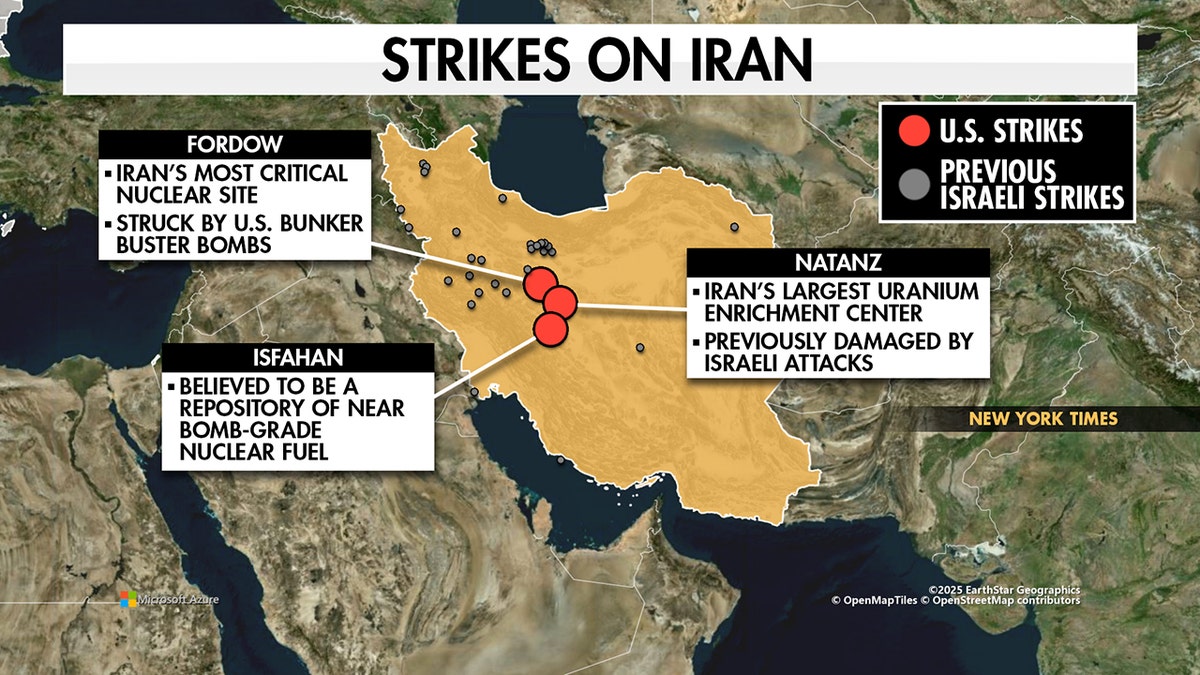
Source: foxnews.com
Image content: The image is a news graphic titled “Strikes on Iran,” showing a map of Iran with highlighted locations and strike markers. It labels key nuclear sites—Fordow, Natanz, and Isfahan—and indicates U.S. strikes (red) and previous Israeli strikes (gray), with brief notes about each site’s significance.
Summary
A series of U.S. strikes on Iran’s nuclear facilities at Fordow, Natanz, and Isfahan sparked intense domestic and international backlash, raising fears of regional escalation and nuclear risk. While the White House framed the action as restoring deterrence, critics from both U.S. political fringes and global actors, including Russia’s UN envoy, condemned the operation as reckless. Initial intelligence assessments suggest the strikes dealt significant but limited damage, delaying Iran’s program by months rather than destroying it, with some centrifuges intact and uranium stockpiles reportedly safeguarded. The IAEA reported likely infrastructure damage but no off-site radiation increase. Amid protests, retaliatory moves, and UN Security Council divisions, experts caution that Iran’s dispersed, hardened, and increasingly subterranean infrastructure limits the effectiveness of airstrikes, even as a fragile ceasefire with Israel tentatively holds.
Key Points
- U.S. strikes hit Fordow, Natanz, and Isfahan, causing significant but limited damage.
- Domestic critics and global actors condemned the action, warning of regional war and nuclear risk.
- Intelligence suggests Iran’s program was delayed by months, contradicting claims of obliteration.
- IAEA noted facility damage without off-site radiation increases; Iran reportedly secured key materials.
- UN divisions and ongoing tensions persist despite a fragile Iran-Israel ceasefire.